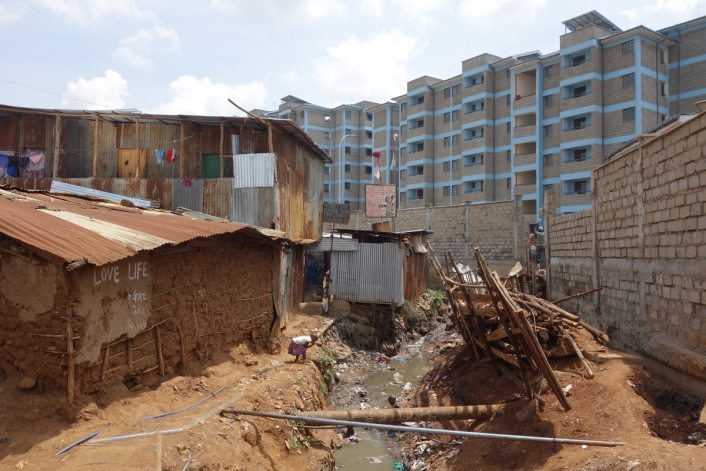A Housing challenge in Africa apparent. This is as a result of increased growth brought about by mainly the commodity boom. With this exponential growth in population, many governments have been confronted by a host of development challenges.
According to the UN-Habitat, Africa is growing into an urban environment at the rate of 4% per annum. With the increase in urban centres many people shift from the rural areas into urban centers.
This causes several challenges ranging from overcrowding, pollution, increased crime rate, social evils associated with urban settings. “Urbanization in the Africa of today is an untapped tool for development and economic growth,” says Joan Clos, the executive director of UN-Habitat.
African cities are expected to grow at higher and steady rates compared to other regions in the world over the next 15 years. This is according to the Oxford Economics, a British firm specializing in global prediction and quantitative study for business and government. They predict Cape Town, Dar es Salaam, Johannesburg and Luanda becoming Africa’s economic power houses.
As many city struggle to achieve reasonable development, this development should not cause adverse effects to the environment. This ensures that this type of development is sustainable i.e ‘cities of the future today ’development that is accompanied by adverse effect to the environment is a time bomb in waiting as such development cannot be sustained into the future.
With Africa’s rapid economic growth and a rapid population growth rate of about one billion means Africa is urbanizing at a faster rate than any other place in the world. Major cities in Africa contribute $700 billion annually to the continent’s GDP and the figure is expected to raise to $1.7 trillion come the year 2030.
according to UN-Habitat the mushrooming of cities in many parts of the developing countries is posing challenges in relation to distribution of people and resources, as well as land problems which lead to insufficient land-use. Cities growing horizontally are finding it hard to deal with increasing population and are likely not to be sustainable over a long period of of challenges with congestion, pollution, infrastructure and social disaggregation. An increase in rural-urban migration can lead to poverty and inequality as many people throng into towns in search of jobs and opportunities. This n turn causes a strain on the available resources.
“Urbanization, particularly in the developing world, has been accompanied by increased levels of crime, violence, and lawlessness. Global studies show that 60% of all urban residents in developing countries have been victims of crime at least once over the past five years, 70% of them in Latin America and Africa,” says UN-Habitat’s website.
Women and are often the biggest victims especially when fear hinders them from accessing services in the city. Insecurity and raising cases of crime restrict city urban development socially and economically. It also compromises development opportunities and polices that are meant to help the poor urban areas.
There is an urgent need for sustainable cities considering cities generate over 70% of the world’s emission. Majority slum dwellers worldwide suffer the consequences of air pollution from indoor cooking, proximity to traffic, industry, contaminated water, inadequate sanitation among other environmental health hazards.
The UN-Habitat proposes a three-model approach to sustainable cities based on effective and comprehensive urban legislation, moderated urban planning and design, and sufficient funding for projects. These three principals are pivotal in transforming the cities and human settlements into centers of environmental, economic and social sustainability.
City planning of sustainable has recently shifted to take into consideration issues of climate change. Africa’s urban environments are in particular prone to flooding and outbreak of diseases. These can be prevented through effective policy implementation, proper planning, and protection of ecologically sensitive areas, undertaking tree planting exercises and energy generation from wastes.
The African Urban Agenda has been developed and is awaiting adoption by the African leaders In July of 2016. It consists of remedies the Africa needs to embrace so as to improve its cities and settlements and promote the idea of Africa’s structural transformation through urbanization.
It represents Africa’s proposals into the Global Urban Agenda to be adopted at Habitat III, a conference on housing and sustainable urban development to be hosted by UN-Habitat in October 2016 in Quito, Ecuador.
It is evident that urban planning needs a shift from viewing urbanization mainly as a problem, to seeing it as a vessel for development and transformation, UN-Habitat says in UN-Habitat Global Activities Report 2015: Increasing Synergy for Greater National Ownership.
At a meeting convened by UN-Habitat together with the Economic Commission for Africa in Ethiopia in March 2014, African Union Commission’s director of political affairs, Khabele Matlosa, emphasized the need for African countries to adopt new development strategies designed to make urbanization more advantageous by through job creation, facilitating structural transformation and addressing social imbalances and inequality and reducing poverty while creating habitable settlements with equal opportunities for all. According to a report by the UN-Habitat, there is need to develop safe settlements. These coupled with sustained economic growth, urbanization, industrialization and a strong urge for human development, can be mutually reinforcing.
With a slum population of 199.5 million according to UN-Habitat, Sub-Saharan Africa has ‘a poorly planned and managed urban sector and, in particular, a malfunctioning housing sector’. Africa has one of the biggest slums in the world notably, West Point in Liberia with a population of more 75,000 people, Kibera slum I Nairobi is Africa’s largest slum with more than two million people. Africa’s housing needs stands at around four million housing units per year, with the urban residents claiming over 60% of the total demand.


